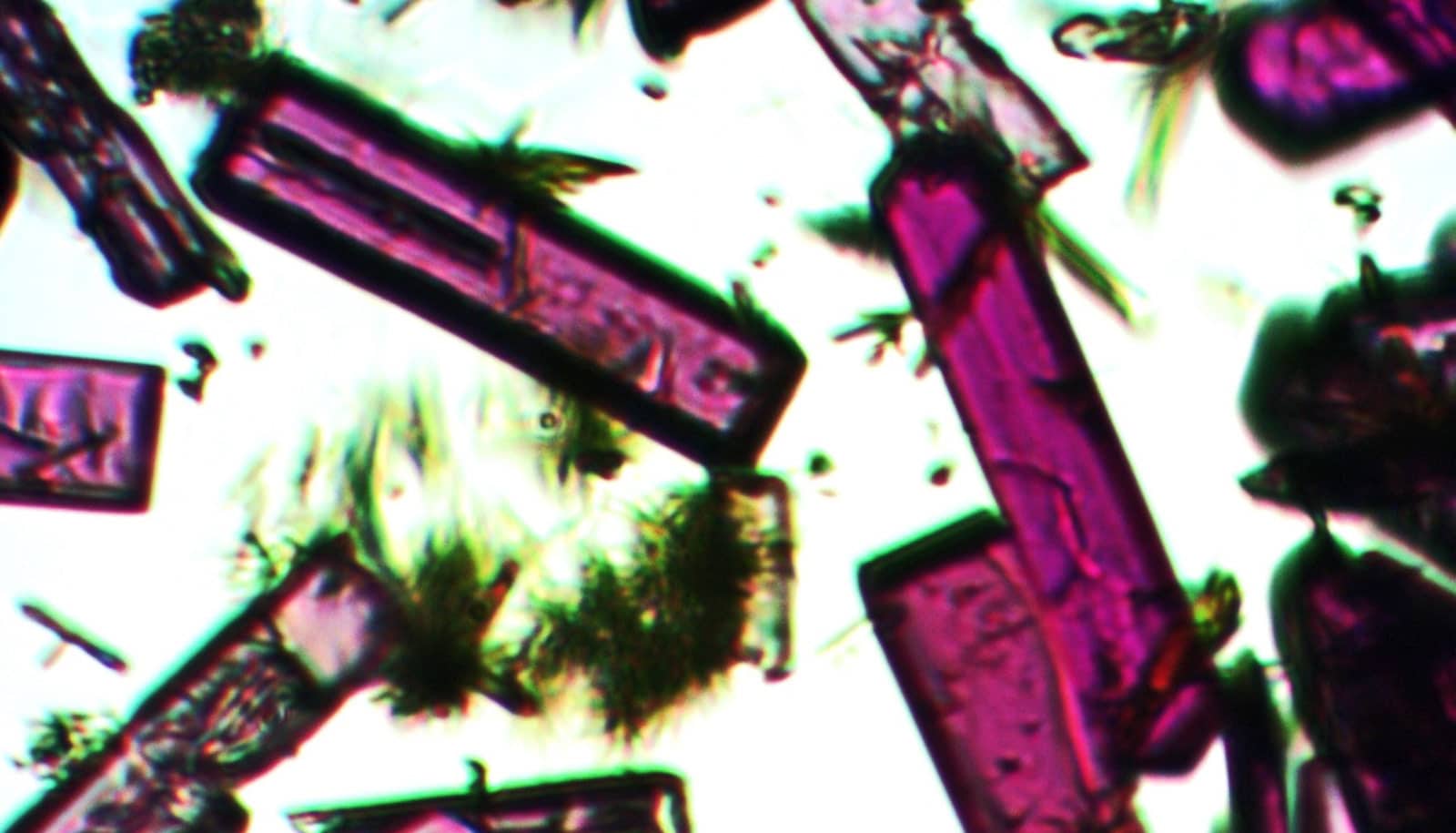Elaborate observations clarify how a crystalline sponge changes shape as it loses water.
The scientists focused on a porous, crystalline material made from metal and organic building blocks—specifically, cobalt(II) sulfate heptahydrate, 5-aminoisophthalic acid and 4,4′-bipyridine.
The observations let them “see” when and how three individual water molecules left the material as it dried out.
Crystalline sponges of this kind belong to a class of materials called metal-organic frameworks (MOFs), which hold potential for applications such as trapping pollutants or storing fuel at low pressures.
“This was a really nice, detailed example of using dynamic in-situ x-ray diffraction to study the transformation of a MOF crystal,” says Jason Benedict, associate professor of chemistry at the University at Buffalo. “We initiate a reaction—a dehydration. Then we monitor it with X-rays, solving crystal structures, and we can actually watch how this material transforms from the fully hydrated phase to the fully dehydrated phase.
“In this case, the hydrated crystal holds three independent water molecules, and the question was basically, how do you go from three to zero? Do these water molecules leave one at time? Do they all leave at once?
“And we discovered that what happens is that one water molecule leaves really quickly, which causes the crystal lattice to compress and twist, and the other two molecules wind up leaving together. They leak out at the same time, and that causes the lattice to untwist but stay compressed. All of that motion that I’m describing—you wouldn’t have any insight into that kind of motion in the absence of these sort of experiments that we are performing.”
Understanding how the structures of MOFs morph—step by step—during processes like dehydration is interesting from the standpoint of basic science, Benedict says. But such knowledge could also aid efforts to design new crystalline sponges. As Benedict explains, the more researchers can learn about the properties of such materials, the easier it will be to tailor-make novel MOFs geared toward specific tasks.
The technique the team developed and employed to study the crystal’s transformation provides scientists with a powerful tool to advance research of this kind.
“Scientists often study dynamic crystals in an environment that is static,” says coauthor Travis Mitchell, a chemistry PhD student in Benedict’s lab. “This greatly limits the scope of their observations to before and after a particular process takes place. Our findings show that observing dynamic crystals in an environment that is also dynamic allows scientists to make observations while a particular process is taking place. Our group developed a device that allows us to control the environment relative to the crystal: We are able to continuously flow fluid around the crystal as we are collecting data, which provides us with information about how and why these dynamic crystals transform.”
The research appears in the journal Structural Dynamics. Additional scientists from University at Buffalo and the University of Chicago also contributed to the project.
Support for the work came from the National Science Foundation and the US Department of Energy, including through the NSF’s ChemMatCARS facility, where much of the experimental work took place.
“These types of experiments often take days to perform on a laboratory diffractometer,” Mitchell says. “Fortunately, our group was able to perform these experiments using synchrotron radiation at NSF’s ChemMatCARS. With synchrotron radiation, we were able to make measurements in a matter of hours.”
Source: University at Buffalo



